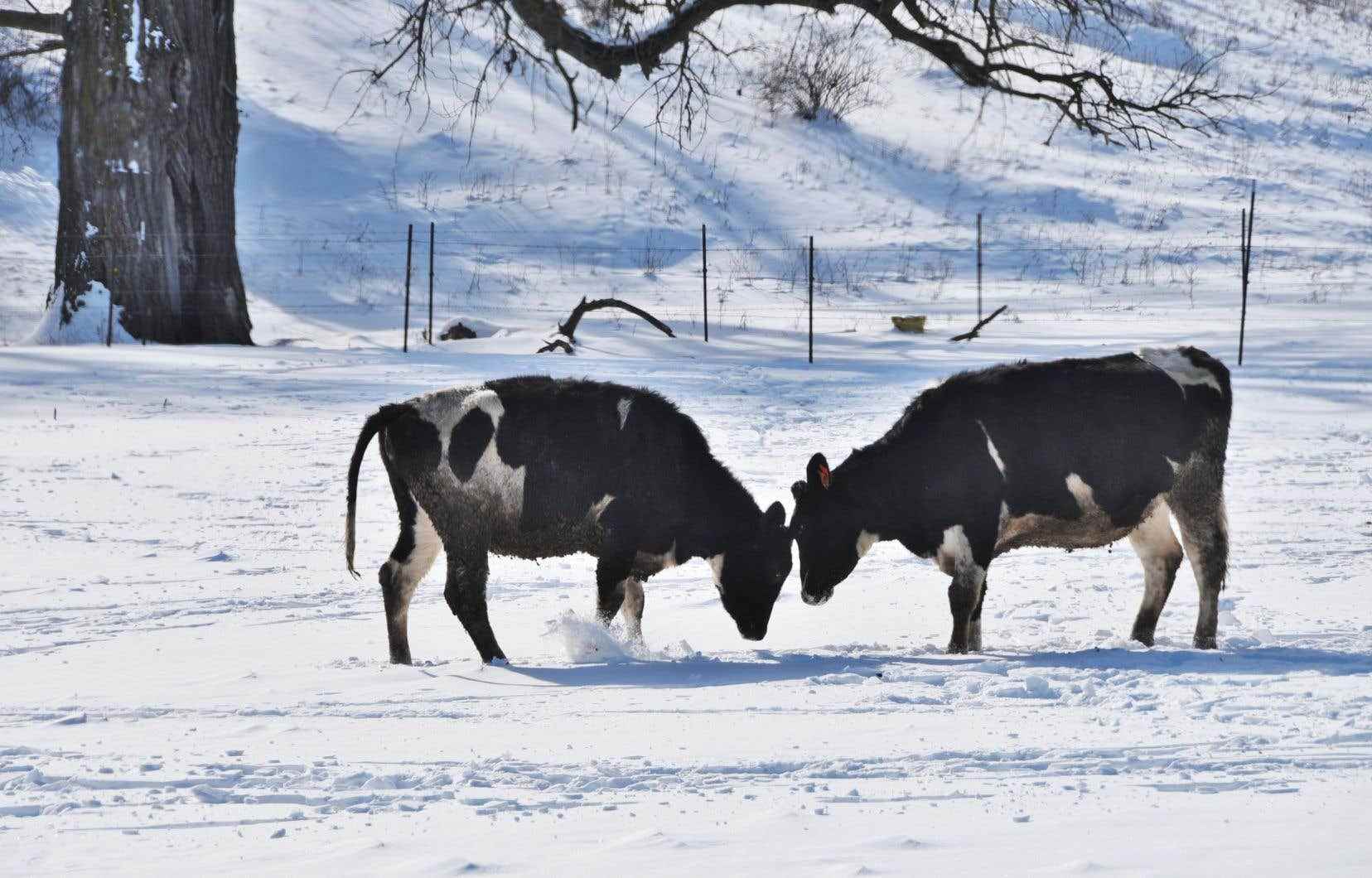This text is taken from the Courrier de la Planète of November 29, 2022. To subscribe, click here.
First of all, let’s remember the facts. A herd of young cows, “heifers” who have never yet given milk, broke through the enclosure of his farm in Saint-Barnabé a few months ago. These beasts now roam the Mauricie countryside. They feast on corn in the fields, damage agricultural land and threaten road safety. Neither the agents of the State nor the cowboys of Saint-Tite have managed to capture them so far.
The herd, initially made up of about fifteen cows, was enlarged by a few calves. He would now count about twenty animals. Despite his likely encounters with coyotes, he seems to adapt to freedom with ease. These beasts are said to “jump fences like deer”. Their union is their strength. “A cow doesn’t like to be alone, because then she feels in danger. Inside a herd, she is fine. A dozen cows like this are autonomous,” dairy producer Yves Lamy recently explained to Le Nouvelliste.
Could these cows, therefore, return to the wild for good, despite our harsh winters? Can the representatives of this worthy species feed, reproduce, defend themselves and raise their young without the help of humans? Short answer: yes! However, let’s take the time to give the long answer.
In the land of the sacred cow
Let us first note that herds on the run are not a phenomenon unique to Saint-Barnabé, Saint-Sévère or Yamachiche. Last year, in the north of France, 60 cows took off. Fireworks would have frightened the animals, which fled. There too the owner of the cows had difficulty catching up with the fugitives, five months after the escape. And we also talked about a return to the wild life. “There is one who has become the mistress and she leads the whole herd,” a game warden told local media.
In some cases, cows take root in an environment due to extraordinary circumstances. In Fukushima, cows roam the towns abandoned following the 2011 nuclear accident. We imagine that some animals have also succumbed to the effects of radioactivity… In the north of England, Chillingham cattle live outside human influence for almost a millennium. These animals had been introduced into a park to satisfy the desires of medieval hunters. Today there are 130 individuals, who are recognized for their stormy temperament and their swift running pace.
One of the most striking examples of the enslavement of cows certainly comes from India, the land of the sacred cow. In Uttar Pradesh, this phenomenon represents an annoying problem. In recent years, the Hindu nationalist government has toughened laws there against the slaughter of cows. Animals, as numerous as ever, are decimating agricultural crops today. “The herds are now getting out of control. I was traveling by bicycle when a wild cow suddenly charged me, ”said a farmer interviewed in April by the correspondent of Ouest-France. According to the 2019 government census, there are more than one million head of free-ranging cattle in this Indian state.
Haida Gwaii Cows
Our country also has feral cows. “There are wild cattle in Canada. Any breeder in the West will acquiesce to this assertion without argument,” reads a 1951 article from the Canadian Cattlemen. These cows, explains the journalist, can spend the winter in the hinterland without being fed. However, they are not “free” in the deepest sense of the word: sooner or later, their owner will end up snaring them and turning them into steak. Unless a cougar or a wolf takes care of it first… Still, it is possible for these cows to survive the harsh cold season.
In British Columbia, however, there are real wild cows. In Naikoon Park, located on one of the islands of the Haida Gwaïi archipelago, live the descendants of animals released in 1901. They had obtained their passport to freedom after the abandonment of a dairy farm project. Five decades later, it was already said that they had “completely returned to the wild”. Well known to local Indigenous residents, these cows surprised government conservationists in 2019. “They eat all the plants and it looks like a freshly mowed lawn,” noted biologist Sharilynn Wardrop. The presence of cows obviously transforms the ecosystem.
In Opitsaht, an island community near Tofino, also in British Columbia, another group of cows live a life of freedom. At the beginning of the last century, missionaries parachuted cattle there in the hope of (unsuccessfully) converting Aboriginal people to western agriculture. Since then, a small herd has been maintained, from generation to generation. These wild cows eat eelgrass, sea grasses. The Tla-o-qui-aht First Nation generally leaves the cows alone, but occasionally catches a specimen for a ceremonial meal. About 16 animals lived last year in Opitsaht.
auroch project
In the Côa Valley, Portugal, cows are being intentionally reintroduced into the wild. In 2013, a dozen animals were released there as part of the Rewilding Europe initiative. The researchers leading the project note that in just a few years, the animals have been “dedomesticated” and that, from one generation to the next, they change their behavior. We now have 35.
For millennia, wild cows roamed this Iberian territory, as evidenced by Palaeolithic cave paintings. The objective now is to cross different breeds of cows, the most ancestral of all, to genetically recreate a new version of the auroch, the wild animal at the origin of today’s cows. Massively hunted throughout its Eurasian range, the auroch disappeared in 1627.
So, yes, cows can return to the wild. The next few weeks will nevertheless be critical for the fate of the herd on the run in Mauricie: efforts to catch up with it will continue, the snow will complicate its escape, and the bite of the cold could make it want to return home. But who knows: maybe he will continue his run and see a population of free cows in Quebec?
